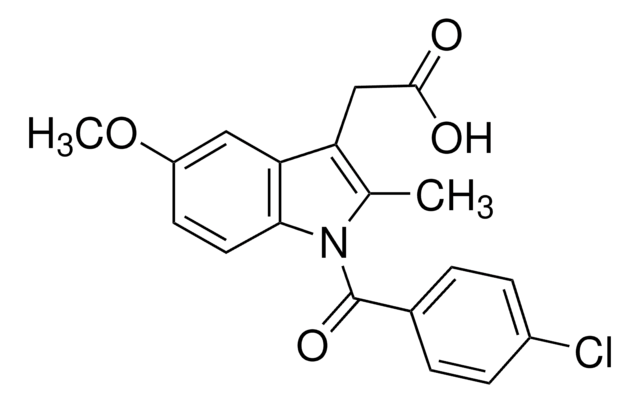R2408
Rosiglitazone
≥98% (HPLC), powder, PPARγ agonist
Synonym(s):
Rosiglitazone, 5-[[4-[2-(Methyl-2-pyridinylamino)ethoxy]phenyl]methyl]-2,4-thiazolidinedione
About This Item
Recommended Products
product name
Rosiglitazone, ≥98% (HPLC)
Quality Level
Assay
≥98% (HPLC)
form
powder
solubility
DMSO: ≥10 mg/mL
originator
GlaxoSmithKline
storage temp.
2-8°C
SMILES string
CN(CCOc1ccc(CC2SC(=O)NC2=O)cc1)c3ccccn3
InChI
1S/C18H19N3O3S/c1-21(16-4-2-3-9-19-16)10-11-24-14-7-5-13(6-8-14)12-15-17(22)20-18(23)25-15/h2-9,15H,10-12H2,1H3,(H,20,22,23)
InChI key
YASAKCUCGLMORW-UHFFFAOYSA-N
Gene Information
human ... PPARG(5468)
Looking for similar products? Visit Product Comparison Guide
General description
Application
- as a medium constituent for adipocyte differentiation
- in the cell proliferation assay in human colonic carcinoma cell lines
- for Bcl-2-like protein 13 (Bcl2l13) expression in adipocytes
- as a peroxisome proliferator-activated receptor gamma (PPARγ) ligand
Biochem/physiol Actions
Features and Benefits
Storage Class Code
11 - Combustible Solids
WGK
WGK 3
Flash Point(F)
Not applicable
Flash Point(C)
Not applicable
Certificates of Analysis (COA)
Search for Certificates of Analysis (COA) by entering the products Lot/Batch Number. Lot and Batch Numbers can be found on a product’s label following the words ‘Lot’ or ‘Batch’.
Already Own This Product?
Find documentation for the products that you have recently purchased in the Document Library.
Our team of scientists has experience in all areas of research including Life Science, Material Science, Chemical Synthesis, Chromatography, Analytical and many others.
Contact Technical Service






